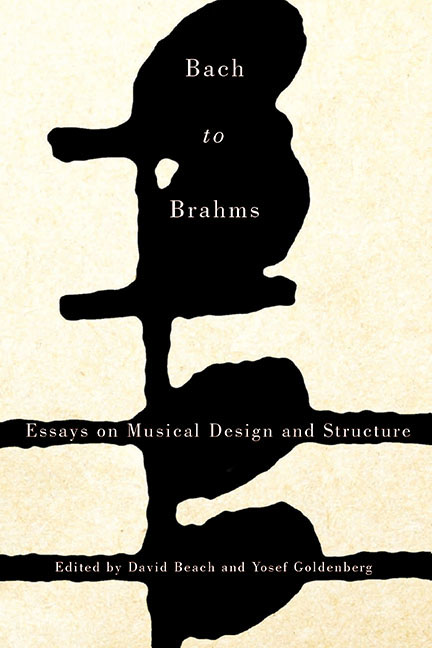Book contents
- Frontmatter
- Dedication
- Contents
- Introduction
- Part One Structure and Design
- Part Two Focus on Motive
- Part Three Structure and Design II
- 11 The “Pseudo-Einsatz” in Two Handel Fugues: Heinrich Schenker's Analytical Work with Reinhard Oppel
- 12 Formal Fusion and Its Effect on Voice-Leading Structure: The First Movement of Beethoven's Opus 132 Revisited
- 13 Indistinct Formal Functions and Conflicting Temporal Processes in the Second Movement of Brahms's Third Symphony
- 14 The Interaction of Structure and Design in the Opening Movements of Schubert's Piano Trios in B-flat Major (D. 898) and E-flat Major (D. 929)
- 15 The Suspenseful Structure of Brahms's C-Major Capriccio, Op. 76, No. 8: A Schenkerian Hearing
- List of Contributors
- Index
12 - Formal Fusion and Its Effect on Voice-Leading Structure: The First Movement of Beethoven's Opus 132 Revisited
from Part Three - Structure and Design II
Published online by Cambridge University Press: 14 March 2018
- Frontmatter
- Dedication
- Contents
- Introduction
- Part One Structure and Design
- Part Two Focus on Motive
- Part Three Structure and Design II
- 11 The “Pseudo-Einsatz” in Two Handel Fugues: Heinrich Schenker's Analytical Work with Reinhard Oppel
- 12 Formal Fusion and Its Effect on Voice-Leading Structure: The First Movement of Beethoven's Opus 132 Revisited
- 13 Indistinct Formal Functions and Conflicting Temporal Processes in the Second Movement of Brahms's Third Symphony
- 14 The Interaction of Structure and Design in the Opening Movements of Schubert's Piano Trios in B-flat Major (D. 898) and E-flat Major (D. 929)
- 15 The Suspenseful Structure of Brahms's C-Major Capriccio, Op. 76, No. 8: A Schenkerian Hearing
- List of Contributors
- Index
Summary
The first movement of Beethoven's A-minor string quartet is surely a strong contender for the title of his most unconventional sonata-based movement. Much critical and analytical ink has been spilled on its formal unorthodoxy and heightened expressive character (topical and subjective). These qualities have in turn prompted larger questions into the extent to which this music, with its pronounced tendency to surface discontinuity, still exemplifies the language of Classicism, together with the implications of all of this for traditional notions of unity and coherence. This study will take another look at the movement, exploring its idiosyncratic formal process from the combined perspectives of Schenkerian paradigms for sonata form and the dialogic approach of Sonata Theory, following Hepokoski and Darcy.
Formal Fusion
“Formal fusion” refers to the simultaneous playing out, within one formal space, of formal functions (thematic and tonal) typically associated with consecutive formal spaces. The spirit of the technique is very much in tune with a nineteenth-century conception of sonata form, a post-Classical aesthetic that stressed formal freedom and continuous growth. It derives its effect from realizations of the thematic rotational principle in such a way as to suggest real form-functional bivalence.
The first movement of opus 132 exhibits this phenomenon at multiple levels: first, at that of the large-scale sonata-formal divisions, arising from triple rotation of the thematic materials—hence fusion of expositional and developmental functions; of developmental and recapitulatory functions; and of recapitulatory and coda functions. Second, formal fusion also operates at the lower level of framing function and thematic unit.
- Type
- Chapter
- Information
- Bach to BrahmsEssays on Musical Design and Structure, pp. 204 - 224Publisher: Boydell & BrewerPrint publication year: 2015



